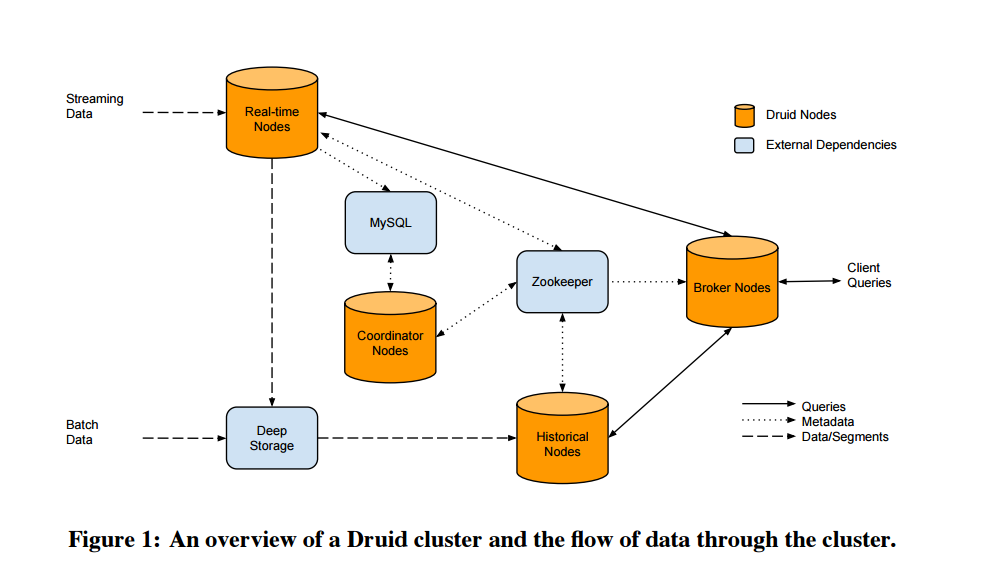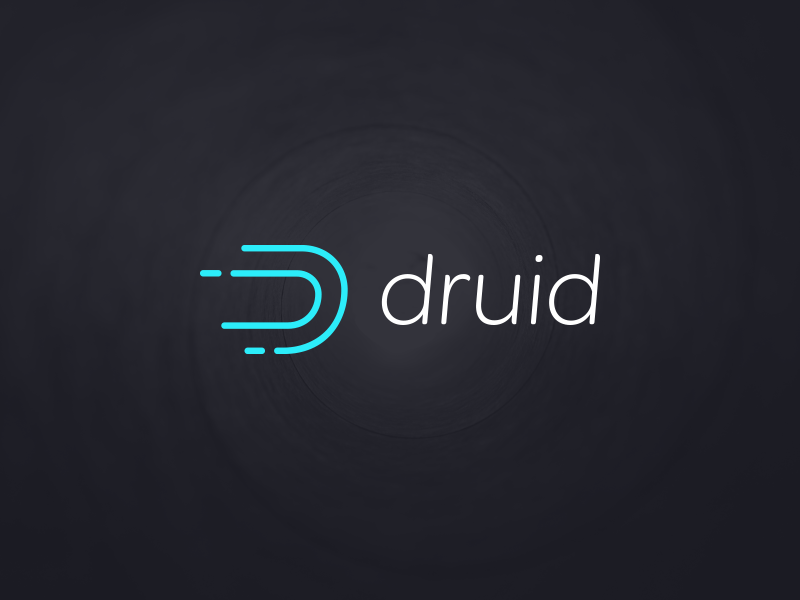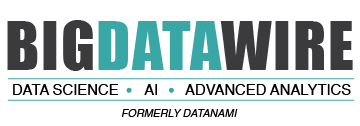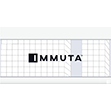

Yahoo is in the process of implementing a big data tool called Druid to power high-speed real-time queries against its massive Hadoop-based data lake. Engineers at the Web giant say the open source database’s combination of speed and usability on fast-moving data make it ideal for the job.
Druid is a column-oriented in-memory OLAP data store that was originally developed more than four years ago by the folks at Metamarkets, a developer of programmatic advertising solutions. The company was struggling to keep the Web-based analytic consoles it provides customers fed with the latest clickstream data using relational tools like Greenplum and NoSQL databases like HBase, so it developed its own distributed database instead.
The core design parameter for Druid was being able to compute drill-downs and roll-ups over a large set of “high dimensional” data comprising billions of events, and to do so in real time, Druid creator, Eric Tschetter wrote in a 2011 blog post introducting Druid. To accomplish this, Tschetter decided that Druid would feature a parallelized, in-memory architecture that scaled out, enabling users to easily add more memory as needed.
Druid essentially maps the data to memory as it arrives, compresses it into a column, and then builds indexes for each column. It also maintains two separate subsystems: a read-optimized subsystem in the historical nodes, and a write-optimized subsystem in real-time nodes (hence the name “Druid,” a shape-shifting character common in role playing games). This approach lets  the database query very large amounts of historical and real-time data, says Tschetter, who left Metamarkets to join Yahoo in late 2014.
the database query very large amounts of historical and real-time data, says Tschetter, who left Metamarkets to join Yahoo in late 2014.
“Druid’s power resides in providing users fast, arbitrarily deep exploration of large-scale transaction data,” Tschetter writes. “Queries over billions of rows, that previously took minutes or hours to run, can now be investigated directly with sub-second response times.”
Metamarkets released Druid as an open source project on GitHub in October 2012. Since then, the software has been used by a number of companies for various purposes, including as a video network monitoring, operations monitoring, and online advertising analytics platform, according to a 2014 white paper.
Netflix was one of the early companies testing Druid, but it’s unclear if it implemented it into production. One company that has adopted Druid is Yahoo, the ancestral home of Hadoop. Yahoo is now using Druid to power a variety of real-time analytic interfaces, including executive-level dashboards and customer-facing analytics, according to a post last week on the Yahoo Engineering blog.
Yahoo engineers explain Druid in this manner:
“The architecture blends traditional search infrastructure with database technologies and has parallels to other closed-source systems like Google’s Dremel, Powerdrill and Mesa. Druid excels at finding exactly what it needs to scan for a query, and was built for fast aggregations over arbitrary slice-and-diced data. Combined with its high availability characteristics, and support for multi-tenant query workloads, Druid is ideal for powering interactive, user-facing, analytic applications.”
Yahoo landed on Druid after attempting to build its data applications using various infrastructure pieces, including H adoop and Hive, relational databases, key/value stores, Spark and Shark, Impala, and many others. “The solutions each have their strengths,” Yahoo wrote, “but none of them seemed to support the full set of requirements that we had,” which included adhoc slice and dice, scaling to tens of billions of events a day, and ingestion of data in real-time.
adoop and Hive, relational databases, key/value stores, Spark and Shark, Impala, and many others. “The solutions each have their strengths,” Yahoo wrote, “but none of them seemed to support the full set of requirements that we had,” which included adhoc slice and dice, scaling to tens of billions of events a day, and ingestion of data in real-time.
Another property of Druid that caught Yahoo’s eye was its “lock-free, streaming ingestion capabilities.” The capability to work with open source big data messages busses, like Kafka, as well as working with proprietary systems, means it fits nicely into its stack, Yahoo said. “Events can be explored milliseconds after they occur while providing a single consolidated view of both real-time events and historical events that occurred years in the past,” the company writes.
As it does for all open source products that it finds useful, Yahoo is investing in Druid. For more info, see the Druid website at http://druid.io.
Related Items:
The Real-Time Future of Data According to Jay Kreps
Glimpsing Hadoop’s Real-Time Analytic Future
Druid Summons Strength in Real-Time
April 24, 2025
- StorONE and Phison Unveil Storage Platform Designed for LLM Training and AI Workflows
- Dataminr Raises $100M to Accelerate Global Push for Real-Time AI Intelligence
- Elastic Announces General Availability of Elastic Cloud Serverless on Google Cloud Marketplace
- CNCF Announces Schedule for OpenTelemetry Community Day
- Thoughtworks Signs Global Strategic Collaboration Agreement with AWS
April 23, 2025
- Metomic Introduces AI Data Protection Solution Amid Rising Concerns Over Sensitive Data Exposure in AI Tools
- Astronomer Unveils Apache Airflow 3 to Power AI and Real-Time Data Workflows
- CNCF Announces OpenObservabilityCon North America
- Domino Wins $16.5M DOD Award to Power Navy AI Infrastructure for Mine Detection
- Endor Labs Raises $93M to Expand AI-Powered AppSec Platform
- Ocient Announces Close of Series B Extension Financing to Accelerate Solutions for Complex Data and AI Workloads
April 22, 2025
- O’Reilly Launches AI Codecon, New Virtual Conference Series on the Future of AI-Enabled Development
- Qlik Powers Alpha Auto Group’s Global Growth with Automotive-Focused Analytics
- Docker Extends AI Momentum with MCP Tools Built for Developers
- John Snow Labs Unveils End-to-End HCC Coding Solution at Healthcare NLP Summit
- PingCAP Expands TiDB with Vector Search, Multi-Cloud Support for AI Workloads
- Qumulo Launches New Pricing in AWS Marketplace
April 21, 2025
- PayPal Feeds the DL Beast with Huge Vault of Fraud Data
- OpenTelemetry Is Too Complicated, VictoriaMetrics Says
- Will Model Context Protocol (MCP) Become the Standard for Agentic AI?
- Thriving in the Second Wave of Big Data Modernization
- What Benchmarks Say About Agentic AI’s Coding Potential
- Google Cloud Preps for Agentic AI Era with ‘Ironwood’ TPU, New Models and Software
- Google Cloud Fleshes Out its Databases at Next 2025, with an Eye to AI
- Can We Learn to Live with AI Hallucinations?
- Monte Carlo Brings AI Agents Into the Data Observability Fold
- AI Today and Tomorrow Series #3: HPC and AI—When Worlds Converge/Collide
- More Features…
- Grafana’s Annual Report Uncovers Key Insights into the Future of Observability
- Google Cloud Cranks Up the Analytics at Next 2025
- New Intel CEO Lip-Bu Tan Promises Return to Engineering Innovation in Major Address
- AI One Emerges from Stealth to “End the Data Lake Era”
- SnapLogic Connects the Dots Between Agents, APIs, and Work AI
- Snowflake Bolsters Support for Apache Iceberg Tables
- GigaOM Report Highlights Top Performers in Unstructured Data Management for 2025
- Supabase’s $200M Raise Signals Big Ambitions
- New Benchmark for Real-Time Analytics Released by Timescale
- Big Data Career Notes for March 2025
- More News In Brief…
- Gartner Predicts 40% of Generative AI Solutions Will Be Multimodal By 2027
- MinIO: Introducing Model Context Protocol Server for MinIO AIStor
- Dataiku Achieves AWS Generative AI Competency
- AMD Powers New Google Cloud C4D and H4D VMs with 5th Gen EPYC CPUs
- Prophecy Introduces Fully Governed Self-Service Data Preparation for Databricks SQL
- Seagate Unveils IronWolf Pro 24TB Hard Drive for SMBs and Enterprises
- CData Launches Microsoft Fabric Integration Accelerator
- MLCommons Releases New MLPerf Inference v5.0 Benchmark Results
- Opsera Raises $20M to Expand AI-Driven DevOps Platform
- GitLab Announces the General Availability of GitLab Duo with Amazon Q
- More This Just In…



























